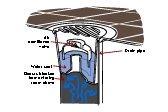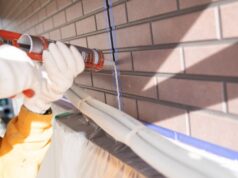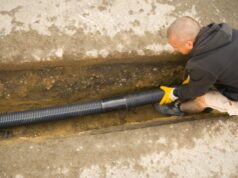
A variety of different kinds of valves are used in home plumbing systems. Learn more about air admittance valves, tempering valves, thermostatic mixing valves, check and isolation valves and more.
Valves are used in plumbing to help control the flow of water or gas, either by directing it through specific pipes or stopping or starting the flow through various pipes. Perhaps the best known and most obvious types of valves are taps, which are used to stop or start the flow of water.
There are a number of different types of valves found in domestic plumbing. Some of them (like taps) are operated manually, while others operate using either pressure or temperature, or to restrict the flow of liquid or gas to one direction.
Below are some of the valves you might find installed in the average home, with a brief explanation of what they do:

Tempering valves
Tempering valves are a requirement in Australian homes, and must be fitted to pipework leading to all water outlets or appliances that use heated water for hygiene purposes (especially bathrooms). This type of valve limits the temperature of the water that’s allowed through (i.e. ‘tempers’ it) to prevent scalding. The valve lets hot water if the temperature is low, and restricts the flow of hot water once the thermostat temperature is reached.
Tempering valves work by blending hot and cold water to deliver mixed water at a constant temperature. They incorporate a temperature sensitive element, which expands and contracts depending on the temperature of the water flowing across it. Tempering valves supply hot water at no-more than 50 degrees Celcius, as is required by Australian regulations.
While tempering valves often aren’t present in existing homes, they are compulsory in ablution areas in all new homes or renovations. You don’t necessarily require a tempering valve for the kitchen sink or laundry tub, although for safety’s sake it may still be wise to install them.
Australian regulations specifically state that tempering valves must be installed in the following situations:
- installation or replacement of a water heater (including like for like replacements)
- installation of a new fixture used primarily for personal hygiene purposes.
A tempering valve is not required to be installed for:
- changing tapware
- replacing an existing fixture used primarily for personal hygiene (same position)
- replacing tap washers or a shower head
- extending of hot water piping not associated with the installation of new fixtures
- general maintenance or replacement of pipework, valves or fittings associated with a hot water system.
Air admittance valves
Air admittance valves, also known as AAVs or Durgo valves, provide internal venting for drains in places when it is difficult to provide a normal sewer vent pipe though the roof space. Traditionally, vents have been used to allow noxious sewer gases to be safely vented out of the home – you’ll often see a small pipe leading out of the roof for this purpose. Air admittance valves work in such a way as to allow the sewer gases to be release through the plumbing vent pipe when waste water is carried out through the drain. Air admittance valves only work one way, only operate when waste water is going down the drain, and should not allow sewer gases into the building.
In addition to allowing sewer gases to be vented in locations where vent pipes can’t be installed, AAVs reduce the amount of required piping, and in turn can help to reduce the amount of labour and maintenance required in general.
Check and isolation valves
A check valve is a valve that by its design allows flow in only one direction. If the pressure direction in the pipe reverses, no flow or only minimal flow will occur in the reverse direction. An isolation valve is designed to isolate a portion of the piping system.
Stopcock valves
These small but important valves are now required to be fitted to mixing taps so that water from the hot water cannot bleed back into the cold water side of the tap.
Thermostatic mixing valves
These sophisticated valves may be used in conjunction with ablution outlets and offer a precise setting to their temperature. This allows the installer to set a precise temperature around 42 degrees C but with an upper limit of a maximum 50 degrees C. They are widely used in aged-care and medical facilities but in recent time have started to be used in domestic showers too.





